Too cold to swim
The Mediterranean coast of Spain has some wonderful highlights. We stay in Barcelona and Valencia, where we do the standard tourist stuff. Lots of Gaudi structures to see in Barcelona. Gaudi was the famous Spanish architect who designed wacky buildings, the most famous being the Basilica de la Sagrada Familia. Construction started in 1882 and it’s still not finished, but a fantastic sight.
We get arty farty at the Picasso Museum and check out some medieval fortresses and 12th century churches along the coast. We always claim that we are students whenever there’s an entry cost. Most times it works. (Now, 48 years later, at the pointy end of life we claim as seniors!).
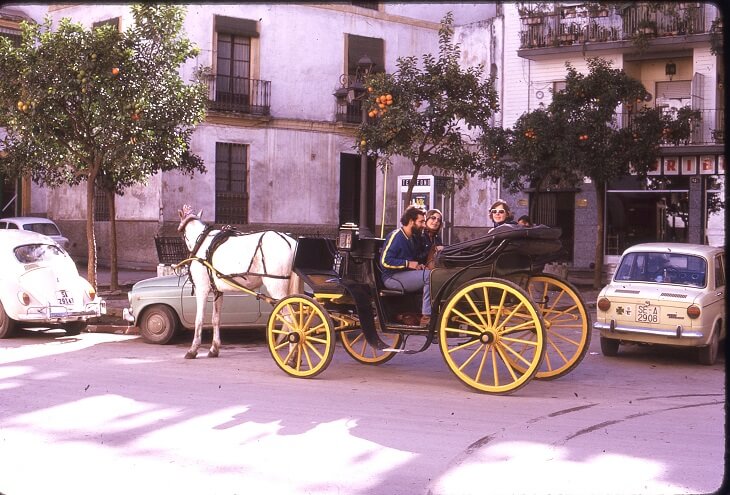
There are many touristy towns along the coast with nice beaches, but it’s too bloody cold to swim. Most nights are frosty, getting down to -5°C. It’s freezing in the van and after dark there’s not much to do other than rug up in bed and read with torchlight. The mornings are the worst – so cold. So much for chasing a warmer climate!
Read: Max’s Memoirs: A travel faux pas in France
The trumpets are playing
We don’t need an alarm clock for a wake-up call because, as Michael writes, “Max woke us up early with a blast of his flugelhorn.” It’s everyone out … “because of the after-effects of Max’s musical concert”.
I must admit, our inner workings are a little messed up since we left Holland. Most of the cheap campgrounds we stay at don’t have hot water because of frozen water in the pipes, and the toilets are more than likely ‘starting blocks’. Squatting is the perfect set-up for full evacuation, just ask any Asian!
We often have to pull over for emergency toileting, as we did for Ursula at Fontainebleau in France. “We got our money’s worth because Ursula had her first crap in seven days.” OMG! At some stops there is little privacy, particularly for the girls. It’s comical to see two cheeks either side of a very thin tree. “Michael got relief at a Shell roadside stop, unloading after four days.” We make sure we are outside. That doesn’t deter his early morning wake-up call the next day. “A resounding flutter blast from Michael woke us this morning.” I return fire with a ‘foofer’. The whole camp burst into life! I’ll tell you what, the van is beginning to stink. None of us has showered for five days and believe me it is rank.

Onward
So, it’s down the coast we go. Lots of eucalypts on roadsides and in plantations a la Aus. We find out that the most convenient time for our shopping coincides with Spain’s siesta time, between 1.30 and 4 pm. Everything’s shut! Cerrado! How bloody inconvenient. Don’t they know that we want to buy lunch and stuff for dinner? We generally eat between 6–7pm at our campsite. Not so for Spaniards. Restaurants aren’t even open before 9pm. They eat dinner between 9pm and midnight.
Read: Get a taste of Girona – Spain’s most delicious city
We buy some Spanish cigarrillos for $0.18 a pack, a couple of bottles of 1928 reserve port for less than $1 a bottle, and some nice local beer. I think we’ll sleep well tonight.
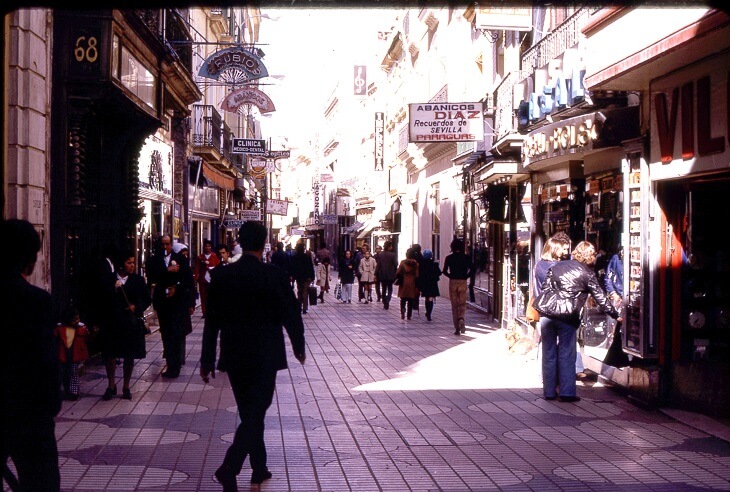
We continue on and free camp where possible but find camping grounds when we need decent facilities. We pass through Cartagena with its ancient Roman theatre, but on first sight we consider the town to be “the arse end of the earth”.
We’re now heading west, inland to Granada over high Andalusian plains and massively eroded clay hills (like Queenstown in Tasmania) near Guadix. People live in houses dug into the mounds. Fascinating! Granada is an impressive place with the spectacular snow-capped Sierra Nevada mountains as a backdrop.
Not to be missed is the world-famous and UNESCO Heritage Site nearby – the Alhambra, a palace and fortress complex, which was built between the 14th and 16th centuries by Muslim rulers. The last Nasrid Sultan, Mohammed XII of Granada, was rather pissed off and seen to be weeping when he surrendered to the Christians in 1492. I too would be bawling my eyes out if I was kicked out of a place like that. Superb Islamic architecture and spectacular gardens feature here.
Through snow showers, we head south to the famous touristy Costa del Sol on the southern Spanish coast. We reckon Malaga and Torremolinos are overrated. We attempt to exchange some Aussie dollars for Spanish pesetas but that’s a no go in Spain. What! Is Australia that insignificant?
The Rock of Gibraltar stands tall as we continue towards the Atlantic Ocean with its never-ending stretches of sandy beaches up the coast north to Cadiz. A carriage ride around Seville labels us as real tourists but is well worth it. We are very impressed with the parks and wide streets in this beautiful city.
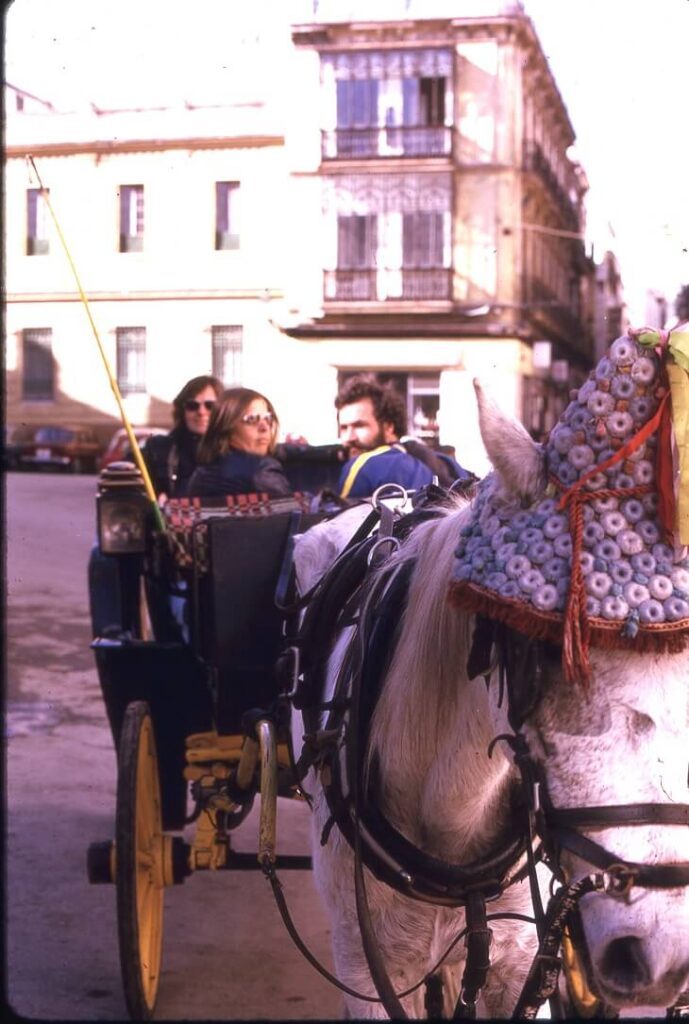
Portugal
We are now in Portugal after crossing the Rio Guadiana at Ayamonte. Again, there is trouble changing money. We must exchange our Australian dollars to US dollars, then to escudos. We continue to Lisbon in search of a campsite with hot showers – stinking again after seven days without a shower. Phew! Laundromat time! We find a great campsite with full amenities in a forest close to the city. Michael and I attempt to work out how to pitch the tent, and in doing so provide lots of entertainment for the girls. Dana and Michael are glad to get out of the claustrophobic van and into the tent – we sleep separately for the first time. Oh joy, oh joy!
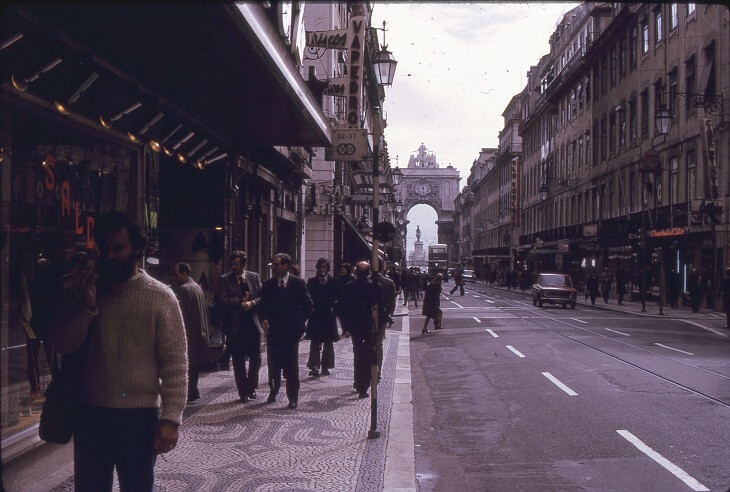
Lisbon is built on seven hills. Our poor feet are put to the test after roaming the city for hours and climbing hill after hill – 12th century cathedral, 2000-year-old Roman fort, beautiful gardens and lots of monuments and churches.

Sintra, only a short distance north of Lisbon, is a very pretty village, with the spectacular and lavish summer palace built for the Portuguese kings. We pull into public toilets at a small village. “In the middle of the small urinal area, there was a woman and two men sitting on the floor eating out of a pot,” writes Michael.
One hundred kilometres north of Lisbon is Nazare, a place I remember so well.

Sardines drying on racks; bullocks pulling the ubiquitous pointy Portuguese boats from the sea; the marketplace; the local people with their distinctive dress style. Absolutely magical place. Now unfortunately it is a tourist haven and would have lost a lot of its unique charm. One reason for its popularity could be that during winter it has some of the biggest waves in the world (up to 30 metres in height). Unfortunately, not while we were there.
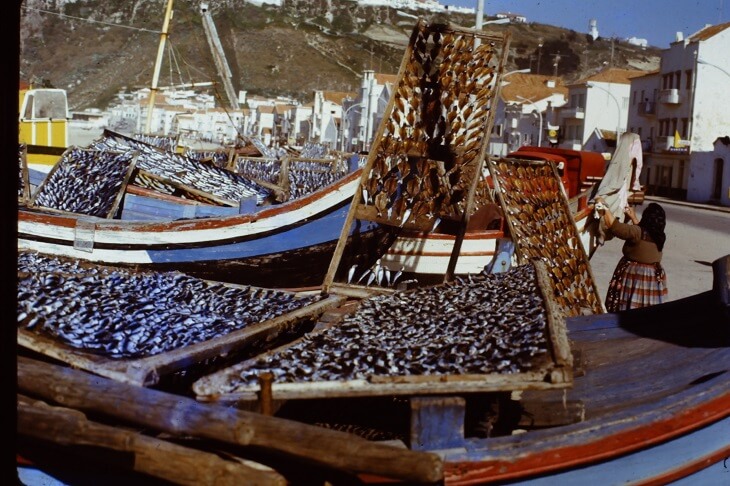
Read: European cities that are better in winter
We continue up the coast (beautiful sandy beaches similar to the 90-mile beach in Gippsland, Victoria) to an unimpressive Porto and wander around the slum area – hounded by kids tugging at our clothes and wanting money. The petrol crisis is in full swing here. We line up for two hours. Most stations have a sign up – esgotado (sold out!).

The weather has turned foul. We are free camping and the heavy rain and acorns dropping from trees onto our van (“in our rubber band propelled tin can”) in the strong winds, does little to ensure a good sleep. Quite picturesque and snow-covered scenic terrain in the central north of Portugal. But now it’s over the border and back to Spain to continue our trip south.
In the next episode, find out about our experience at a brutal bullfight in Madrid.
If you enjoy our content, don’t keep it to yourself. Share our free eNews with your friends and encourage them to sign up.

